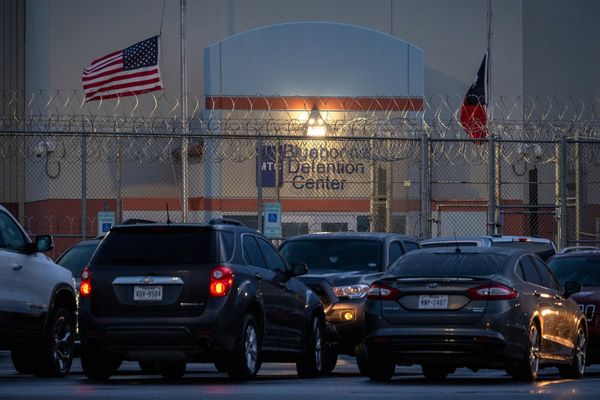
If you asked Warren Buffett whether you should invest in JetBlue Airways (JBLU) stock, he would likely say no, suggesting you run away as fast as possible before you lose all of your investment.
“At the 2020 Berkshire annual shareholders meeting, Buffett said he'd spent $7 billion to $8 billion amassing stakes in Delta Air Lines, United Airlines, American Airlines and Southwest Airlines,” Yahoo Finance contributor Jared Blikre stated in April 2021.
“He didn't comment on the exit prices except to say, ‘We did not take out anything like $7 [billion] or $8 billion.’ This contributed to Berkshire's massive $50 billion loss in the first quarter of 2020.”
If you invested $1,000 in JetBlue’s April 2002 IPO, you would have $178.89 to show for your 23-year investment. If you invested the same $1,000 in Berkshire Hathaway, you would have $11,316.64. I think it’s fair to say Berkshire was the better bet.
In Tuesday’s trading, JetBlue was one of 89 stocks (market cap over $1 billion) to hit a 52-year low. It was the airline’s 14th of the past 12 months.
Is all hope lost, with the stock down 30% in the past year and 82% from its $27 IPO price in 2002? I’ll consider that question.
Nowhere to Go But Up?
It’s a nice thought but hardly grounded in reality.
According to S&P Global Market Intelligence, the airline generated an operating profit of $508 million from $5.82 billion in revenue a decade ago. In 2024, its revenues were 59% higher at $9.28 billion, but it had a $93 million operating loss.
It has lost money operationally every year since 2019. As a result, its retained earnings over the past five years have fallen by 69%, from $4.32 billion in 2019 to $1.32 billion in 2024.
Are you familiar with the Altman Z-Score? It is a calculation involving items from the balance sheet and income statement that indicate the likelihood of Chapter 11 bankruptcy proceedings in the next 24 months.
At the end of 2019, its score was 1.78--anything below 1.81 is considered distressed--and today, it is 0.59, the lowest since 2020 during the pandemic and the third-lowest in its 23-year run as a public company.
Fortunately, the company has a plan to turn things around.
JetForward to Profitability
Last September, the company launched its JetForward strategy to turn its business around.
Three key drivers of the plan:
1) It is restructuring its route network by dropping unprofitable routes (15 cities) and redeploying this capacity (about 20%) to the East Coast, where it will lean on its operations at New York Laguardia and Newark Liberty International.
2) It will simplify its fleet to two aircraft: The Airbus A220, with 27 put into service in 2024, and the A320. The A220 will replace the Embraer E190s. According to Simple Flying, the A220s have 90% more premium capacity with a 30% reduction in unit costs. Equally important, the 44 A321neos initially scheduled for delivery between 2025 and 2029 have been pushed back to 2030 and beyond.
3) It will improve the customer experience, including better on-time performance on its flights and a free carry-on bag for its Blue Basic passengers.
However, as they say, the devil is in the details.
JetBlue attracts a value-oriented customer. If it can combine operational efficiency with high-touch customer service at the airport and inflight, it can return to profitability.
If. If. If.
How Is the Turnaround Progressing?
Investors will know more when the company reports its Q1 2025 results on April 22. In the meantime, its shares fell considerably in late January--over 25%, its most significant single-day drop since its IPO-- when it reported its fourth-quarter results for 2024.
Investors weren’t impressed with its guidance on unit costs, which are expected to rise by 6% in 2025, including a 9% increase in the first quarter. This metric is commonly called CASM, or cost per available seat mile.
On the top line, it expects RASM (operating revenue per available seat mile) to increase by 4.5% at the midpoint of its guidance, up from flat in 2024.
As it said in its Q4 2024 press release, it managed to cut its costs by $190 million in 2024 while deferring over $3 billion in capex for the A321neos and securing $3 billion in additional financing, so it enters 2025 in a better position than it did in 2023.
“‘This is a multiyear strategy, and it’s not linear, and we’re focused on the long term here in getting JetBlue back to sustained profitability,’ CEO Joanna Geraghty, who took the top job last year, said during an earnings call on Jan. 28. ‘So it’s going to take a little time.’”
JetBlue aims to generate between $800 million and $900 million in EBIT profitability by 2027. In 2024, its EBIT loss was $658 million.
The Bottom Line on JBLU Stock
Because the economy could go into the tank in 2025 due to Trump’s tariffs, airlines probably aren’t the place to be to preserve capital.
However, JetBlue’s penny-stock status makes it an alluring bet for some.
Of the 17 analysts that cover its stock, none rate it a Buy, with 11 Holds and six Sells. The target price is $6, whereas, of the 25 that cover Delta Air Lines, (DAL) 23 rate it a Buy, with a $77.50 target price.
Delta CEO Ed Bastian is exceptional. It’s a much better buy.
However, if you must, I would look at something inexpensive like the July 18 $8 call with a $0.10 ask price or just 2% of its current share price.







